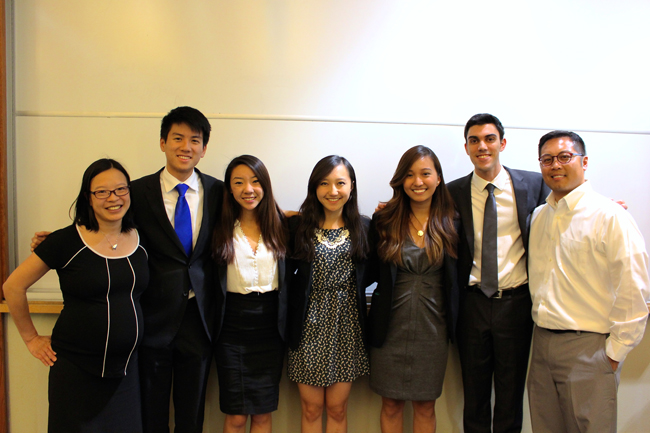SOLVING SAN JOSE’S “TALENT DRAIN”
Team Berkeley suggested solutions from using smart water metering to “intellistreet” street lamps – a combination street light security camera – to new and efficient bus ticket sensors. San Jose and San Francisco provided unique challenges to the teams. Despite being California’s most educated city, San Jose suffers from “talent drain” and an older demographic. It’s home to many large tech organizations but nearby Mountain View is taking many new tech companies and the techies largely want to live in San Francisco.
Consequently, Team San Jose proposed corporate housing, smart transportation, and a governance portal to eliminate bureaucratic barriers that small businesses currently face when trying to move to San Jose. “Across the board, I was highly impressed by the quality of the Haas students’ research, analysis, and presentations,” says Michelle Thong, a business development officer for the City of San Jose.
“San Jose did a remarkable job,” Darwin says. “They said, ‘Let’s take all of this land we have and let’s use it to create housing in and for Silicon Valley’. For a minimal cost, you can build housing facilities, have 24/7 wifi and provide a transportation system for access to the rest of Silicon Valley and San Francisco.”
A DISRUPTIVE SELF-DRIVING CAR TRAFFIC SOLUTION
All of those techies ending up in San Francisco has created some large-scale traffic issues. Team San Francisco focused on tackling that issue, by proposing a program they called Pilot on Demand. The project would link tech giants with car manufacturers and the city government to provide on-demand self-driving cars. The cars would pick up people from the same areas traveling to similar destinations. All of the car activity would be tracked and the data provided to the city to improve the flow of moving people.
“The driverless car method uses the same infrastructure but it eliminates so much travel time and reduces pollution and adds safety as they are proven to have less accidents than human-operated vehicles,” explains Darwin. “I thought that was a phenomenal idea. But the judges didn’t seem to like it as much. But that is true with every disruptive proposal. A disruptive idea is never popular. I give credit to my students for thinking disruptively.”













Questions about this article? Email us or leave a comment below.